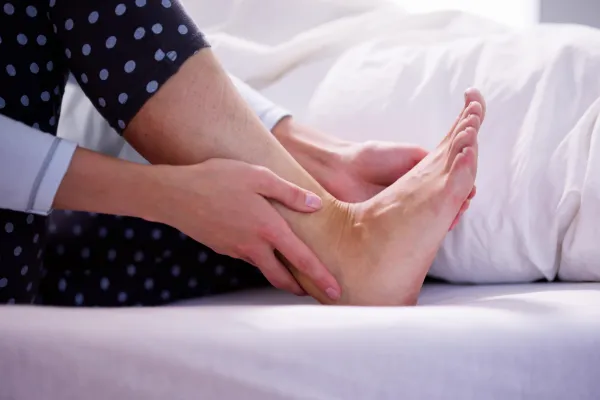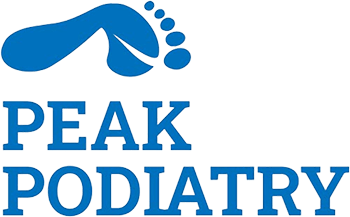
How We Treat Sports Injuries Like Achilles Tendinopathy and Stress Fractures
Injured But Still Want to Stay Active?
You’ve been training hard—running, playing sports, hitting the gym. And then it happens. A sharp pain in your ankle or a dull ache in your lower leg that just won’t go away.
If that sounds familiar, you might be dealing with Achilles tendinopathy or a stress fracture—two common injuries we treat often here at Peak Podiatry.
The good news? These injuries are very treatable with the right care, and you don’t always need surgery or long-term rest.
Achilles Tendinopathy: What Is It?
Your Achilles tendon is the strong band that connects your calf muscle to your heel. It helps you walk, run, jump—basically, it’s working every time you move.
Achilles tendinopathy happens when the tendon becomes irritated or damaged from overuse. It’s common in runners, footballers, and anyone who does a lot of jumping or sprinting.
Signs you might have it:
Pain at the back of your heel or lower calf
Stiffness, especially in the morning
Swelling or thickening in the tendon
Pain that gets worse with exercise
Stress Fractures: Small Cracks, Big Impact
A stress fracture is a tiny crack in a bone, often caused by repeated stress over time—like from running or jumping without enough rest.
They can affect different parts of the foot and lower leg, including:
The shin (tibia)
The top of the foot (metatarsals)
The heel (calcaneus)
Signs you might have a stress fracture:
Sharp, pinpoint pain in one area
Pain that increases with activity and improves with rest
Swelling or tenderness
A feeling like something’s “not right” in your foot or leg
So, How Do We Treat These Injuries?
At Peak Podiatry, we treat sports injuries every day—so we understand how frustrating it can be to feel stuck or unable to train.
Here’s our step-by-step approach to getting you back on your feet:
Step 1: Full Assessment
We don’t just treat the symptoms—we look at why the injury happened. That includes:
Asking about your training habits, footwear, and activity level
Watching how you walk, run, or move
Checking your strength, flexibility, and foot mechanics
Using imaging (if needed) to confirm a stress fracture
Step 2: Accurate Diagnosis
It’s important to know exactly what we’re dealing with. Achilles pain isn’t always tendinopathy, and shin pain isn’t always a fracture. We’ll explain everything clearly and give you a diagnosis you can understand.
Step 3: Personalised Treatment Plan
We create a treatment plan that’s tailored to you, not just the injury. This may include:
For Achilles Tendinopathy:
Stretching and strengthening exercises (especially eccentric loading)
Shockwave or laser therapy to speed up healing
Heel lifts or custom insoles to reduce strain on the tendon
Activity modification—not stopping exercise completely, but adjusting it wisely
For Stress Fractures:
A short period of rest or offloading (sometimes with a boot)
Supportive footwear or custom orthotics
Gradual return-to-activity plan—no rushing back
Advice on nutrition, recovery, and training volume
Step 4: Prevention Going Forward
We don’t stop once the pain goes away. We help you build habits that reduce the chance of getting injured again, like:
Improving your running or walking technique
Updating your shoes or training surfaces
Teaching recovery strategies (rest days matter!)
Keeping your muscles balanced and strong
When Should You Book In?
If you’ve had pain for more than a week or two, or it’s stopping you from doing the things you love, it’s time to get it checked.
Even if you’re not sure whether it’s serious, we’ll give you answers—and a plan that actually works.
Let’s Get You Moving Again
At Peak Podiatry, we help athletes, runners, and active people recover smarter—not just faster. Whether it’s Achilles tendinopathy, stress fractures, or another sports injury, we’ll get to the bottom of it and help you bounce back stronger.
Ask Robert And His Team
Fill in the form to request a Call From Our Team
Fill in the form to request a Call From Our Team
One of our team will call you for FREE and answer any questions or concerns you may have about your Foot Pain.
One of our team will call you for FREE and answer any questions or concerns you may have about your Foot Pain.
© Copyright 2022. Peak Podiatry All rights reserved.





